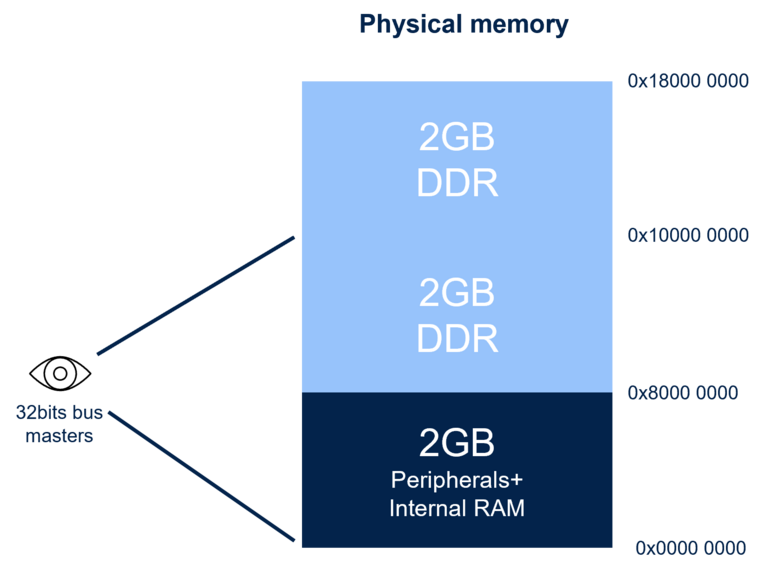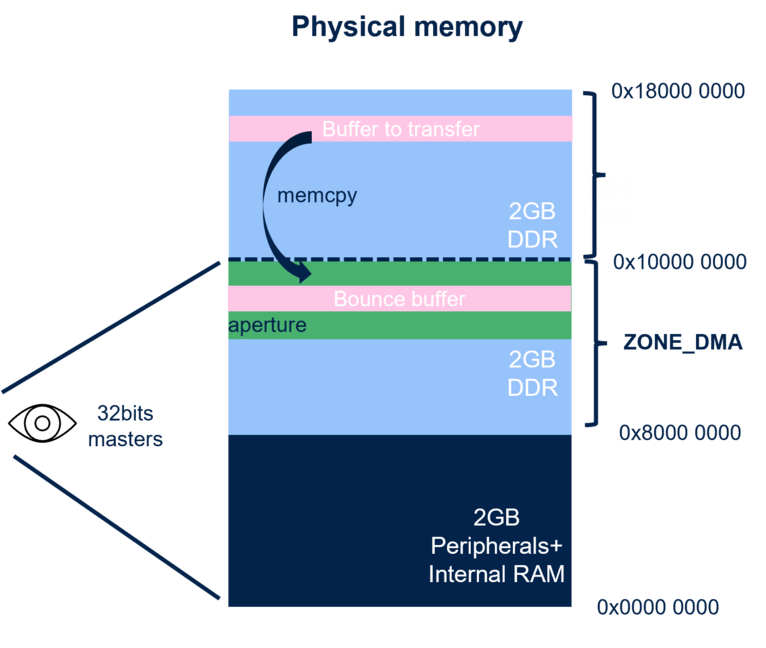1. Purpose[edit source]
This page is to explain SWIOTLB mechanism on platform which embed more than 2GB of DDR. This SWITOLB mechanism is a native Linux kernel feature which is enabled by default. More details 'here'.
2. STM32 memory space[edit source]
To understand the need of the SWIOTL feature, the STM32 memory space has to inspected. Basically, it can be represented as following:
- The first 2GB [0x0000 0000 - 0x7fff ffff] of the memory space is used for internal memory and peripherals registers.
- The rest of the memory space is used for the DDR:
- [0x8000 0000 - 0xffff ffff] for a 2GB DDR
- [0x8000 0000 - 0x17fff ffff] for a 4GB DDR
The CPU (cortex-A35) and some peripherals are "master" on the bus and can access directly to the DDR. Those peripherals are basically ones which embed a DMA: HPDMA, ETH, SDMMC, DCMIPP, USB3, USBH, DCMIPP, LTDC, VDENC, VENC, PCIE. Except the Cortex-A35, all those peripherals are only 32 bits compatible, meaning that they can't access to an address greater than 0xffffffff. It is not a problem for a 2GB DDR (or shorter) but for DDR greater than 2GB it is. Indeed, if a buffer is allocated inside an area above the first 2GB of DDR then bus master can't access to it.
The SWIOTLB mechanism solve this issue.
3. SWIOTLB feature[edit source]
SWIOTLB (S'oftware Input Output Translation Lookaside Buffer) feature avoid a DMA to access to a buffer out of his bound. As soon a dma_map_xxx API is call, swiotlb code checks the DMA capabilty (32bit/more) of the requester:
- if the address of the buffer to transmit is in the range of the DMA capability, then no problem
- if the address of the buffer to transmit is higher than the DMA capability then the SWIOTLB copies the buffer to transmit in an area (the "aperture") which is accessible by the DMA. This copy is done thanks a memcpy.
4. Good practices[edit source]
5. References[edit source]

